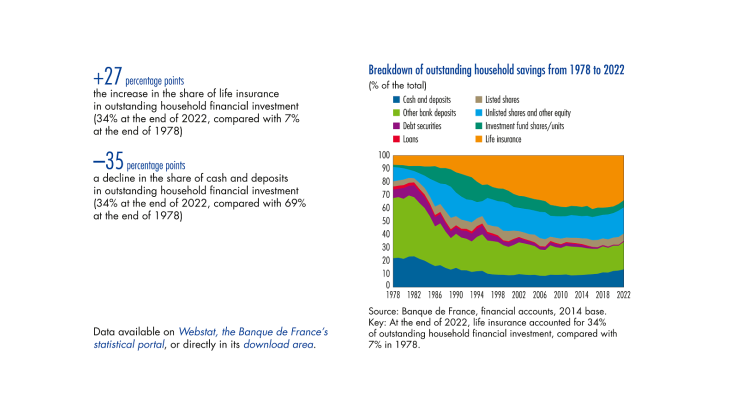1. The increase in France’s wealth has primarily been driven by land and buildings
For almost forty years, and with the exception of two downturns in 2008 and 2014, France’s national economic wealth, calculated as the difference between assets – real and financial – and liabilities, increased every year, reaching almost EUR 20,000 billion in 2022. This amount, which includes the wealth of households, companies and general government, increased thirteen fold in nominal terms between 1978 and end 2022. This trend must be set against inflation, but even if we compare this wealth with other measures such as gross domestic product (GDP) or the similar concept used in this article, net domestic product (NDP, see appendix), this ratio has increased over the long term. Thus, while it averaged 5 years of NDP between 1980 and 2000, France’s economic wealth represented 9.5 years of NDP by the end of 2022 (see Chart 1). Over the period, two thirds of this increase came from valuation gains, mainly from 2000 onwards, while flows (net savings and current account balance with the rest of the world) accounted for 21%.
The levels reached by net national economic wealth essentially reflect growth in non financial wealth, whose assets consist mainly of land and buildings. The changes observed can mainly be ascribed to the rise in value of land underlying buildings, which explains the increase in the non financial component of the portfolio. Machinery and equipment, inventories and non produced intangible assets make up the bulk of non financial wealth.
Gross financial assets, whose level was close to that of non financial assets in 1978, were much more significant in 2022 (19 years of NDP, compared with 5 years in 1978), reflecting the expansion of the financial sphere. They were estimated at EUR 40,000 billion, but their counterpart on the liabilities side was close to this level, so their contribution to national wealth in net value terms was much lower. The value of financial assets and liabilities increased 25 fold over the period. The financial sector, which more often than not plays an intermediary role, held around half of all assets and liabilities in 2022. The latter did not develop at a very different pace to that of other sectors, suggesting that the banking system contributed to, but not necessarily hastened, the development of the financial sphere.
[To read more, please download the article]
